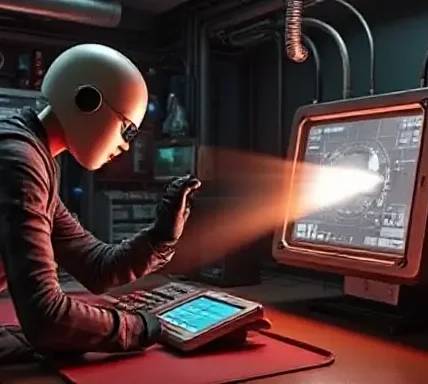Today, almost everyone has in some form smart devices, such as a smartphone, smartwatch, or home assistant like Amazon, Alexa or Google Home. Such devices demand robust core technologies to become so intuitive, efficient, and interactive. But what are those technologies that help turn them into real-time action? In this article, we will delve deeper into the core technologies in smart devices: how they function and why they are global in impact.
The more we weave technology into every aspect of our lives, the more exposure to these understandings further increases appreciation for the human-scaled capabilities our devices proffer. Whether you are a techie or just eager to learn more about the gadgets you see every day, this article will reveal what makes them ‘smart.
What Are Core Technologies in Smart Devices?
Core technologies actually form the bedrock that enables smart devices to perform advanced functions. They make possible instant, intuitive learning from user behavior. Some fundamental components of the hardware and software systems that contribute to ensuring seamless experiences for users in smart devices include:
These technologies include sensors, processors, wireless communications systems, and artificial intelligence (AI). These, when integrated into one system, are capable of producing machines that can command responses, learn user preferences, and even automate day-to-day activities.

Key Core Technologies in Smart Devices
Let’s explore some of the crucial core technologies that power modern smart devices.
1. Sensors
Sensors play one of the most primitive roles in smart devices. This enables the device to interact with the environment and gather information. For instance:
- Touch sensors help in detecting the location and time of tapping by the user on the screen in mobile phones and tablets.
- Smartwatch sensors track step counts, heart rates, and other activities.
- Proximity sensors embedded in smart lights will switch the lights on or off automatically by detecting the presence of a person nearby.
- Temperature sensors in smart thermostats such as Nest adjust temperature settings in your home according to weather and your preferences.
These sensors provide real-time data, thus enabling the device to respond to the environment and your activities.
2. Processors and Chips
These are the processors or chips, known as brains of a smart device that actually perform all computations and data processing. Any smart device, be it a phone, a watch, or a home assistant, will require one dedicated chip or processor that controls operations of the smart device.
These processors help in conducting the following functions:
- Running apps
- Calculation
- Communication between various components of the device
The power and efficiency of a processor directly affect the performance and speed of its smart device. Smartphone processors are very developed and offer multitasking without any noticeable slowdown.
3. Wireless Communication
The internal workings of smart devices allow for wireless communication with other devices and the Internet. This enables everything from syncing your smartphone with your smartwatch to connecting your home assistant to your smart lights.
Here are some of the wireless technologies upon which smart devices depend:
- With WiFi, devices connect to the Internet for data transfer.
- Bluetooth enables the communication of devices within a small range, e.g., connecting headphones to mobile phones.
- NFC (Near Field Communication) enables data transfer when both devices touch, primarily for contactless payments.
- 5G is the upcoming generation of mobile networks specifically designed for data transfer devices, such as smartphones and the Internet of Things (IoT).
These technologies enhance user experience, allowing smooth interchange of data and connectivity with devices.
4. Artificial Intelligence (AI)
Artificial Intelligence (AI) has become an extremely critical part of any intelligent device. It has made possible the learning of user behaviors, decision-making, and adaptation according to different situations. Examples of actions performed by AI include:
- Voice recognition: Such as recognition and response to speech command from people with devices like Amazon. Alexa or Apple Siri.
- Over Time predictive action: As time goes by, AI learns a lot from its user behavior and suggests preferred content or automates activities according to how one uses it. For example, the smart thermostat understands how one likes the temperature set and makes the changes for the user themselves.
- Customization: AI presents how these smart devices can understand the needs of the user and fulfill it according to their use of the device throughout the day or even to personal adjustments on the user’s phone.
Artificial intelligence helps designers create smart devices that become increasingly intuitive, personalized, and better suited to our daily needs.
5. Cloud Computing
The most important feature of cloud computing is that it provides remote storage and processing centers for huge amounts of data from smart devices. While a smart device uses its internal storage type of memory, it also communicates with cloud servers to send and receive data over the internet. This way, a smart device can:
- Store data: Saving photos, videos, and files in the cloud also frees up space on your phone.
- Access a larger database: Smart speakers, for example, are capable of processing voice commands and quickly gathering information from the internet via cloud computing.
- Sync across devices: The biggest advantage of cloud storage is that you can link it to several devices from which you can access your information. For example: photos clicked on your smartphone and automatically synced to your tablet or computer.
Cloud computing makes smart devices more versatile, scalable, and efficient-in fact-more connected with user to their data regardless of geographical barriers.
6. Battery Technology
The major concern of any smart device with regard to its intelligence is its portability and lifespan. With the advancement in battery technologies, smart devices like smartphones, wearables, and wireless headphones can now work for longer hours without the need for recharging. Lithium and newer battery technologies like solid-state batteries are contributing toward better battery life, reduced charging times, and smaller devices.
Improved battery technology thus improves overall performance and usability of a smart device so that it does last even in heavy usage throughout the day.
Why Are Core Technologies Important for Smart Devices?
The ability to make those devices “smart” comes from the core smart technologies that are present in the devices. Then, without all these underpinnings, they would just be dumb objects with limited functionalities. Here is why these technologies are so significant:
- Effectiveness: The learning from data is imparted to smart devices, and as user behaviors change, smart devices will respond by becoming more effective and responsive.
- Convenience: The technologies-sensors and wireless use and AI-permit tasks to be made automatic and also make devices far easier to interface with.
- Connectivity: All smart devices connect and communicate to the internet, allowing access to services and information at any time, anywhere. In fact, they are facilitated through wireless communications and cloud computing.
- Personalizing: Such individualized services and functionality that are represented in smart devices are customized and tailored by the aid of artificial intelligence and data analysis.

Conclusion
These core technologies of smart devices have transformed the interaction between man and machine, making devices smart, fast, and custom to the users themselves. Sensors sensing one’s actions, AI learning preferences-all these technologies work hand in hand to generate a seamless and instinctive user experience. Certainly, more features and smarter devices are expected to come up as technology advances further into the future, thus redefining our connected world.
Read Also: Interactive Response Technology
Frequently Asked Questions (FAQs) About Core Technologies in Smart Devices
According to the definition, a Smart Device is any gadget that works automatically or in response to user commands, and also improves with usage, and accomplishes these purposes by making use of core technologies such as sensors, AI, wireless communication, and cloud computing.
Sensors in smart devices can be motion, temperature, or touch sensors, which collect data regarding their surroundings and send it to the internal data processing engine. This information is used to correlate commands with the actual responses of that smart device.
Smart devices mostly need Internet to work. This applies especially to those that operate on cloud computing or depend on voice assistants or real-time updates, such as smartphones, smart speakers, and smart devices for home use.
These smart devices equipped with artificial intelligence can learn from their interaction with the user and behaviors. After some time, they get to understand your preferences in making better suggestions, automating tasks, and improving their functions.
Most commonly, electronic products use wireless communication to connect with each other and to the internet. Bluetooth establishes a short-range connection, while Wi-Fi and 5G give access to the internet and a very high data transfer rate.





